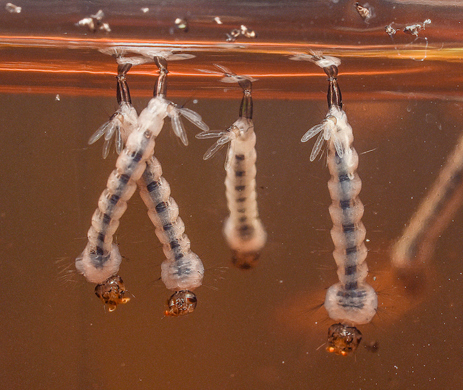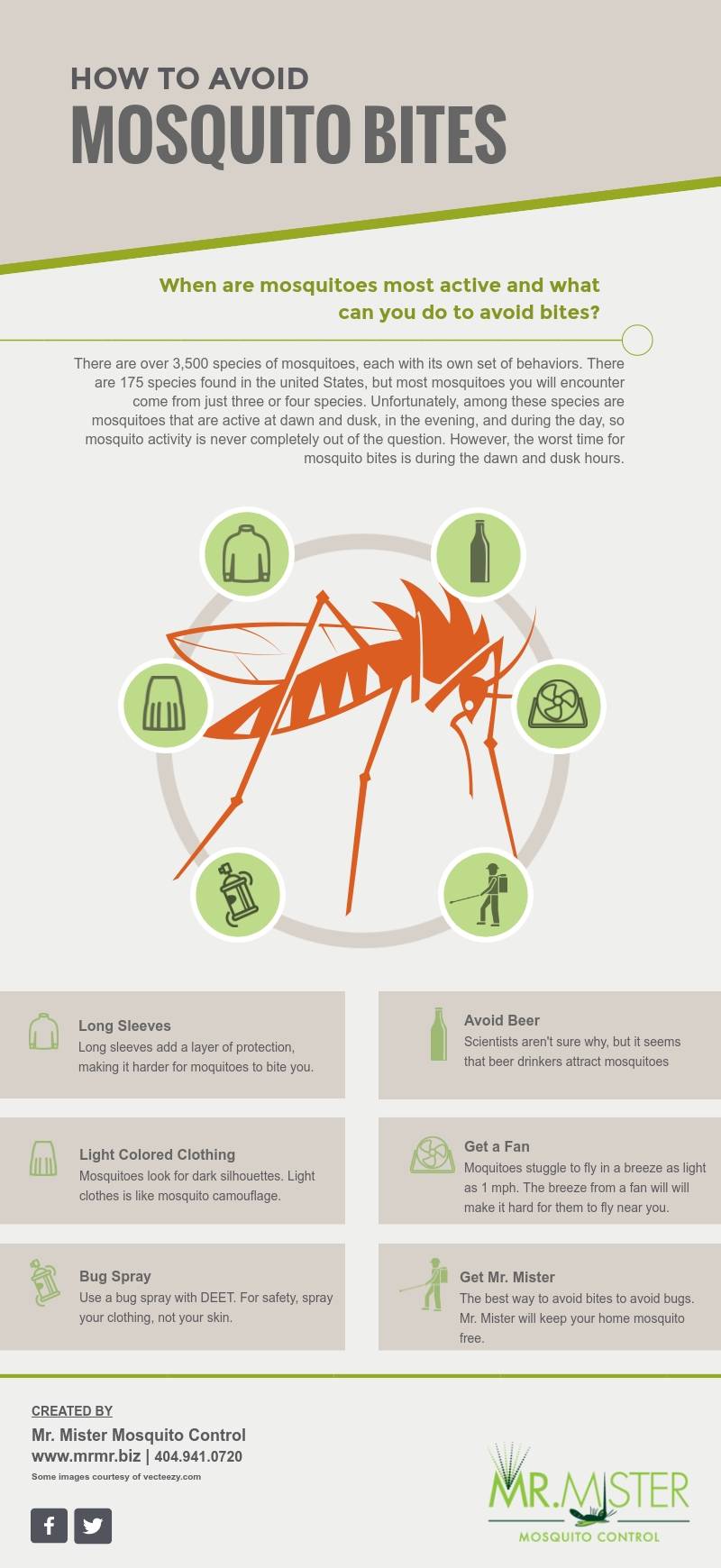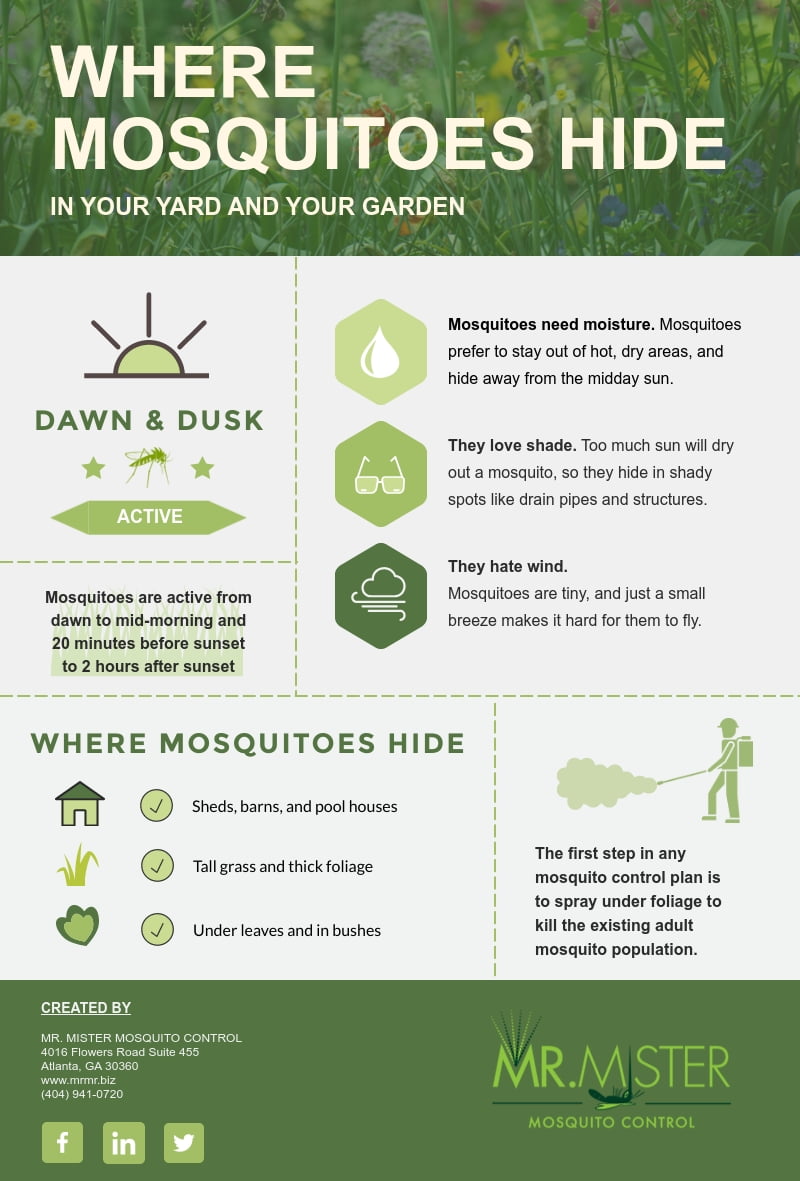Mosquitoes hide in shady areas like the undersides of leaves and shrubbery during the day. They become active after sunset and remain so throughout the night until just before sunrise.
Mosquitoes are fascinating creatures that often provoke curiosity about their behavior. From their feeding habits to their preferred resting spots, understanding these aspects can help in managing and controlling their population. One common question that arises is, “Where do mosquitoes go during the day?
” This query is particularly relevant for individuals seeking to protect themselves from mosquito bites. By gaining insight into their daytime habits, it becomes easier to implement effective preventive measures. Let’s delve into the intriguing world of mosquitoes and explore where they hide during the daylight hours.

Credit: www.pestworld.org
The Secret Hideouts Of Daytime Mosquitoes
Have you ever wondered where mosquitoes go during the day when they’re not buzzing around and biting you? These pesky insects are known for their nocturnal activities, but during daylight hours, they have their secret hideouts where they seek refuge. Let’s explore some of the common hiding spots of daytime mosquitoes.
Shady Retreats: Leaves And Shrubbery
One of the favorite hideouts for mosquitoes during the day is the cool and shady areas provided by leaves and shrubbery. They can often be found resting on the undersides of leaves, taking shelter from the scorching sun. The dense foliage provides them with protection from predators and helps them stay hydrated by reducing water evaporation from their bodies.
Man-made Shelters: Sheds And Yard Clutter
Mosquitoes are resourceful creatures and will take advantage of any man-made structures or yard clutter that can provide them with a safe hiding place. Sheds, garages, and even outdoor storage containers become ideal shelters for mosquitoes during the day. These structures offer protection from the elements and create a dark and damp environment, which mosquitoes find appealing.
Additionally, yard clutter such as piles of leaves, unused pots, and other debris create hidden nooks and crannies where mosquitoes can rest undisturbed. These areas often retain moisture, providing mosquitoes with the perfect conditions to survive.
To effectively control mosquito populations, it is essential to eliminate or minimize these potential hiding spots around your home. Regularly clean up yard clutter and trim shrubbery to reduce the number of resting places for mosquitoes.
Now that you know the secret hideouts of daytime mosquitoes, you can take proactive measures to minimize their presence in your surroundings. By understanding their preferred hiding spots, you can create an environment that is less attractive to these irritating insects.
Remember, prevention is key when it comes to mosquito control, so be proactive and take steps to reduce their hiding spots during the day. By doing so, you can enjoy your outdoor spaces without the constant annoyance of mosquito bites.
Mosquito Behavior Explained
Mosquitoes are known to hide in shady areas during the day, such as the undersides of leaves, shrubbery, or inside sheds. They come out in the evening, after sunset, and are active throughout the night until early morning. Mosquitoes go to safe places to avoid predators and develop a batch of eggs, which they lay in stagnant water.
Nighttime Activity: When They Emerge
Mosquitoes emerge in the evening after the sun sets, and they’re active throughout the entire night and into the early morning right before the sun rises. They hide in shady areas like the undersides of leaves and shrubbery, inside sheds, or beneath yard clutter during the day.
Feeding Patterns: Seeking Blood
Mosquitoes seek blood for their nourishment, and they go off to find a safe place where they can avoid predators and keep from drying out. After finding a safe spot, they develop a batch of eggs and then lay them in any convenient stagnant water. Depending on the species, they may then go and get another blood meal and develop another batch of eggs.
Surviving The Winter: Mosquito Tactics
During the day, mosquitoes seek out shady areas to rest and avoid predators. They can hide underneath leaves, shrubbery, or inside sheds. Mosquitoes become active at night, feeding throughout the night and into the early morning before the sun rises.
Hibernation Havens: Where They Overwinter
During the winter months, mosquitoes employ various tactics to survive the harsh conditions. One of their primary strategies is to find suitable hibernation havens where they can wait out the cold weather. Mosquitoes, being cold-blooded insects, are highly sensitive to temperature changes and cannot withstand freezing temperatures. So, where do they go when the temperatures drop?Mosquitoes have a knack for finding sheltered spots that provide protection from the freezing cold. They seek out locations such as hollow logs, tree holes, and even underground burrows to hibernate in. These sheltered areas help them maintain a stable temperature and protect them from the freezing temperatures outside.Egg Laying Before The Chill
Before the arrival of winter, mosquitoes engage in a critical reproductive process that ensures the survival of their species. Female mosquitoes lay their eggs in stagnant water sources, such as ponds, ditches, and rainwater-filled containers. These eggs are incredibly resilient and can survive freezing temperatures.By laying their eggs before the chill sets in, mosquitoes ensure the survival of their offspring. The dormant eggs remain in the water throughout winter, waiting for the warmer temperatures of spring to hatch. This reproductive strategy allows mosquitoes to rebound quickly when favorable conditions return.In addition to hibernating adults and dormant eggs, some mosquito species also have a unique survival tactic known as “diapause.” Diapause is a period of suspended development that allows mosquitoes to withstand the harsh conditions of winter. During diapause, mosquito larvae delay their growth and development until more favorable environmental conditions arise.In conclusion, mosquitoes have evolved remarkable tactics to survive the winter months. They seek out hibernation havens, lay their eggs before the chill, and employ diapause to endure the cold. Understanding these mosquito tactics can help us better comprehend their behavior and develop effective strategies for mosquito control. So, the next time you wonder where mosquitoes go during the day, remember that they are busy preparing for the challenges of winter survival.
Credit: www.mrmr.biz
Natural Repellents Mosquitoes Hate
Mosquitoes are repelled by certain natural scents, making them avoid areas infused with these scents. By incorporating these natural repellents into your surroundings, you can create a mosquito-resistant environment that deters these pesky insects.
Plant Defenses: Citronella To Lavender
Plants like citronella, peppermint, cedar, catnip, patchouli, lemongrass, and lavender emit scents that mosquitoes find unpleasant. By strategically planting these natural repellents in your garden or backyard, you can effectively ward off mosquitoes.
Creating A Mosquito-resistant Landscape
- Plant citronella, peppermint, cedar, catnip, patchouli, lemongrass, and lavender.
- Remove any standing water where mosquitoes breed.
- Keep your outdoor area well-maintained to eliminate potential mosquito hiding spots.
- Use natural repellent sprays to enhance protection.
By incorporating these natural repellents into your landscaping and following preventive measures, you can create an environment that mosquitoes will find inhospitable, reducing their presence and ensuring a more enjoyable outdoor experience.
Life Cycle Insights: Beyond The Bite
During the day, mosquitoes seek refuge in shady spots under leaves, shrubs, sheds, or yard clutter to avoid predators and dehydration. They emerge in the evening, remaining active throughout the night until just before sunrise.
Life Cycle Insights: Beyond the BiteMosquitoes are pesky insects that can ruin a peaceful outdoor experience. But have you ever wondered where they go during the day? These bloodsuckers have a fascinating life cycle that goes beyond just biting humans. In this article, we will explore the life cycle of mosquitoes and shed light on where they go during the day.H3: Egg Production ProcessThe life cycle of mosquitoes begins when the female mosquito lays her eggs. She will lay her eggs in stagnant water, including ponds, birdbaths, and even puddles. The eggs will hatch into larvae within 24 to 48 hours. The number of eggs a female mosquito lays depends on the species, but it can range from 100 to 300 at a time.H3: From Pupae to Predator: Development StagesAfter the eggs hatch, the larvae will go through four stages of development. During this time, they will molt and shed their skins. Once they reach the fourth stage, they will become pupae. The pupae will then go through metamorphosis and emerge as adult mosquitoes.But where do mosquitoes go during the day? Most mosquitoes rest or sleep in damp areas with shelter from direct sunlight, like shaded wetlands, forests, or other humid environments. They will hide in areas like the undersides of leaves and shrubbery, inside sheds, or beneath yard clutter.Once the sun sets, mosquitoes become active and will fly around in search of a blood meal. They are most active during dawn and dusk. Female mosquitoes require a blood meal to develop their eggs. After they have had a blood meal, they will rest for a short period before laying their eggs in stagnant water.In conclusion, mosquitoes have a fascinating life cycle that goes beyond just biting humans. They go off to find a safe place during the day where they can avoid predators and keep from drying out, where they develop a batch of eggs. Mosquitoes are most active during dawn and dusk, and they require a blood meal to develop their eggs. Understanding their life cycle can help us take preventative measures to reduce their population and protect ourselves from their bites.
Credit: www.todayifoundout.com
The Quest For Rest: Mosquito Sleeping Habits
Mosquitoes are well-known for their annoying bites, but have you ever wondered where they go during the day? Like many other creatures, mosquitoes require rest and shelter during daylight hours. Understanding their sleeping habits can help us to better control and prevent the spread of mosquito-borne diseases.
Indoor Hiding Spots
When indoors, mosquitoes often seek out dark and humid places to rest. This may include basements, closets, attics, and other areas that are rarely disturbed by humans. They may also hide in indoor plants and flowers, where they can find both moisture and shelter.
To prevent mosquitoes from using your home as a resting spot, it’s important to keep these areas clean and dry. Make sure to eliminate any standing water, as this can provide a breeding ground for mosquitoes. You may also consider using screens on windows and doors, and using mosquito repellent products to keep them at bay.
Outdoor Resting Areas: Forests And Wetlands
When outdoors, mosquitoes tend to seek out damp and shaded areas where they can find shelter from the sun. This may include forests, wetlands, and other humid environments. They may also rest in tall grasses and shrubs, where they can remain hidden from predators.
To prevent mosquitoes from using your yard as a resting spot, it’s important to keep the area clean and dry. Make sure to eliminate any standing water, as this can provide a breeding ground for mosquitoes. You may also consider using mosquito repellent products and wearing protective clothing to avoid being bitten.
In Conclusion
By understanding where mosquitoes go during the day, we can better prevent them from spreading diseases and causing annoyance. Whether indoors or outdoors, it’s important to eliminate standing water and keep areas clean and dry to discourage mosquitoes from resting and breeding. With the right prevention methods, we can enjoy a mosquito-free environment all day long.
Mosquitoes In Your Backyard: Unwanted Guests
Mosquitoes are not only a nuisance, but they can also pose health risks to you and your family. It’s important to understand their behavior and habits, especially during the day when they seem to disappear. So, where do mosquitoes go during the day?
Water Bodies: Ponds And Wet Grounds
Mosquitoes are attracted to stagnant water bodies such as ponds and wet grounds. These areas provide them with the ideal environment for laying their eggs and seeking refuge during the day. The still water offers a safe haven for mosquito larvae to develop, and the damp surroundings provide the perfect conditions for adult mosquitoes to rest and hide from the sun’s rays.
Garden And Yard: The Mosquito Playground
Your garden and yard can unwittingly become a mosquito playground. Tall grass, shrubs, and overgrown vegetation create shaded areas where mosquitoes seek shelter during the day. Additionally, any standing water in your yard, such as clogged gutters or pooled water in flower pots, can serve as a breeding ground and resting place for mosquitoes.
Addressing The Mosquito Menace
Where do mosquitoes go during the day? This is a question that often crosses our minds, especially when we are trying to enjoy some outdoor time without being bothered by these pesky insects. Understanding the behavior of mosquitoes during the day is crucial in addressing the mosquito menace and implementing effective preventive and eradication measures.
Preventive Measures: Reducing Attraction
Mosquitoes are attracted to various factors such as standing water, body odors, and certain scents. Implementing preventive measures to reduce their attraction can significantly minimize their presence.
- Eliminate standing water around your property to prevent mosquito breeding.
- Use mosquito repellents and wear light-colored clothing to reduce attraction.
- Install screens on windows and doors to prevent mosquitoes from entering your home.
Eradication Efforts: Safe Practices
Implementing safe and effective eradication efforts is essential in controlling mosquito populations without harming the environment or other beneficial insects.
- Use mosquito traps and biological control methods to reduce mosquito populations.
- Avoid the use of chemical pesticides that can harm beneficial insects and wildlife.
- Regularly maintain outdoor areas to eliminate potential mosquito resting and breeding sites.
Frequently Asked Questions
Where Do Mosquitoes Hide At Day?
During the day, mosquitoes hide in shady areas like the undersides of leaves, shrubbery, sheds, or yard clutter. They become active in the evening after the sun sets and remain active throughout the night and early morning before the sun rises.
What Smell Does Mosquito Hate?
Mosquitoes hate the smell of citronella, peppermint, cedar, catnip, patchouli, lemongrass, and lavender. These scents can be used to fend off mosquitoes naturally.
Where Do Mosquitoes Go When They’re Not Biting You?
Mosquitoes go to shady areas like the undersides of leaves, shrubbery, sheds, or yard clutter during the day. They come out in the evening, stay active throughout the night, and lay eggs in stagnant water. They also find safe places to avoid predators and prevent drying out.
Conclusion
Mosquitoes seek shelter during the day in shady spots like under leaves or in sheds. They emerge at dusk, active throughout the night. Understanding their behavior helps in managing their presence effectively. Protecting against mosquito bites is crucial for avoiding diseases they may carry.
Related posts:

I’m MD Tanvir, and I bring years of expertise gained from working closely with pest control companies to the forefront. My journey in the industry has inspired me to launch Bug Battler, a platform aimed at equipping people with the know-how to combat pests autonomously. Through Bug Battler, I aim to empower individuals with practical insights to tackle pest infestations effectively.

